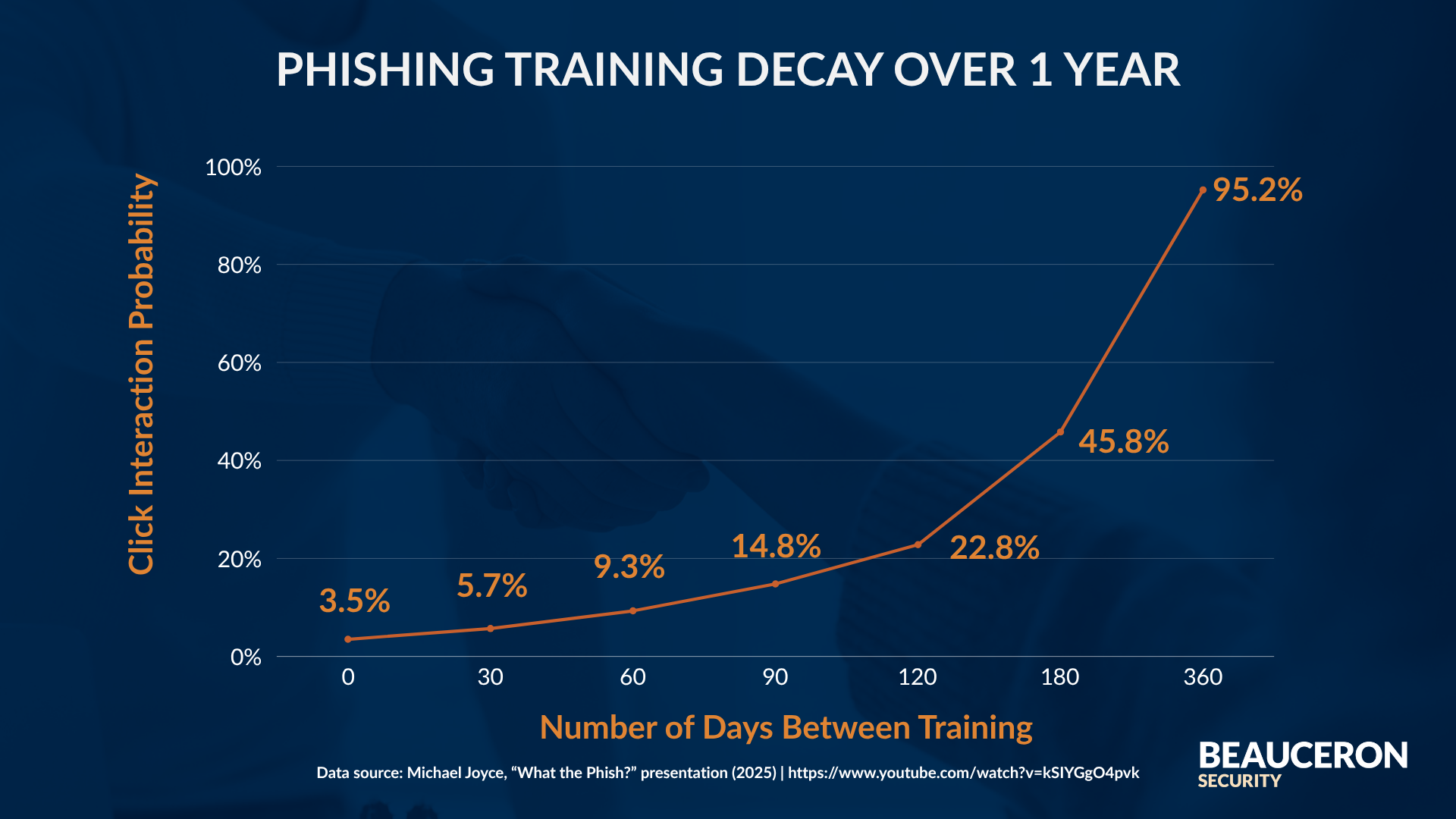Regularly Occurring IT Safety Meetings: They Work at Home Too
Stéphanie Bringloe
The numbers make one thing clear — proactive learning beats reactive training every time. Teams that build awareness steadily across the year stay sharper and more resilient when real threats appear.
Data source: Michael Joyce, “What the Phish?” presentation (2025) | https://www.youtube.com/watch?v=kSIYGgO4pvk
Consequently, doing a deep-dive course into "IT Safety 101" once a year is never going to be as effective as a few short courses spread over the year.
Moreover, if the only context in which an employee completes IT Security training is when they've been "caught" by a phishing simulation, there is an inevitable layer of defensiveness that will hamper how well they absorb their training.
What you may not know is that this same approach works wonders at home. Regular chats with your family about safe tech use is a wonderful habit to build into your parenting strategy.
Consider this: if your kids' only exposure to discussions on safe technology/internet use is in response to something they might have done "wrong," their shame is being linked to the entire topic in their brains.
This shame may then lead them to hide their behaviors in the future and prevent them from talking to you about it.
Making internet/technology safety discussions a regularly occurring event in your home helps in three ways.
First, it keeps your kids aware of the dangers that exist in the online world, and updated on the latest trends and scams that are out there.
Second, it builds the right connections in their brain between this topic and open/honest discussions with trusted parents/guardians.
And third, it pre-emptively avoids a defensive response when these discussions are triggered by negative events such as clicking on something by mistake, or behavioral issues around extended interactions with technology/screen time (more on this in this blog post).
Here are some IT Safety guidelines to consider including in your family meetings on the topic:
Keep track of how much time you are spending online. It can really creep up on you!
Notice your feelings when you interact with technology. Are you actually feeling this way, or is someone/something trying to make you feel this way?
Always send any link with either a spoken or messaged heads-up. Never click on a link unless you were expecting it.
Remember to use a password manager to secure all your accounts.
Never share personal details (full names, addresses, pictures, etc.) on any open forum/chat style of open platform.
Remember that what you see online is curated. No one's lives are as perfect as they appear.
If you aren't sure if something is real or AI generated, come see us (parents/guardians) and we will help you figure it out.
We (parents/guardians) are here to help you if you are struggling or think you might have made a mistake!
Having these regularly scheduled meetings might feel a little corporate, and I admit I felt that way when we established these as part of our parenting strategy.
But, when life is busy – and when is it not? – we don't always remember to talk about the things that are important to us… unless they are threatened. And unfortunately, it turns out that when the things that are important to us are threatened, it's not as easy to talk about them critically and with empathy.
Keep the topic of safe internet/technology use positive in your home by talking about it regularly and openly within your families. This is how you can build a strong connection with your kids as they, themselves, develop their connections to the online world.


